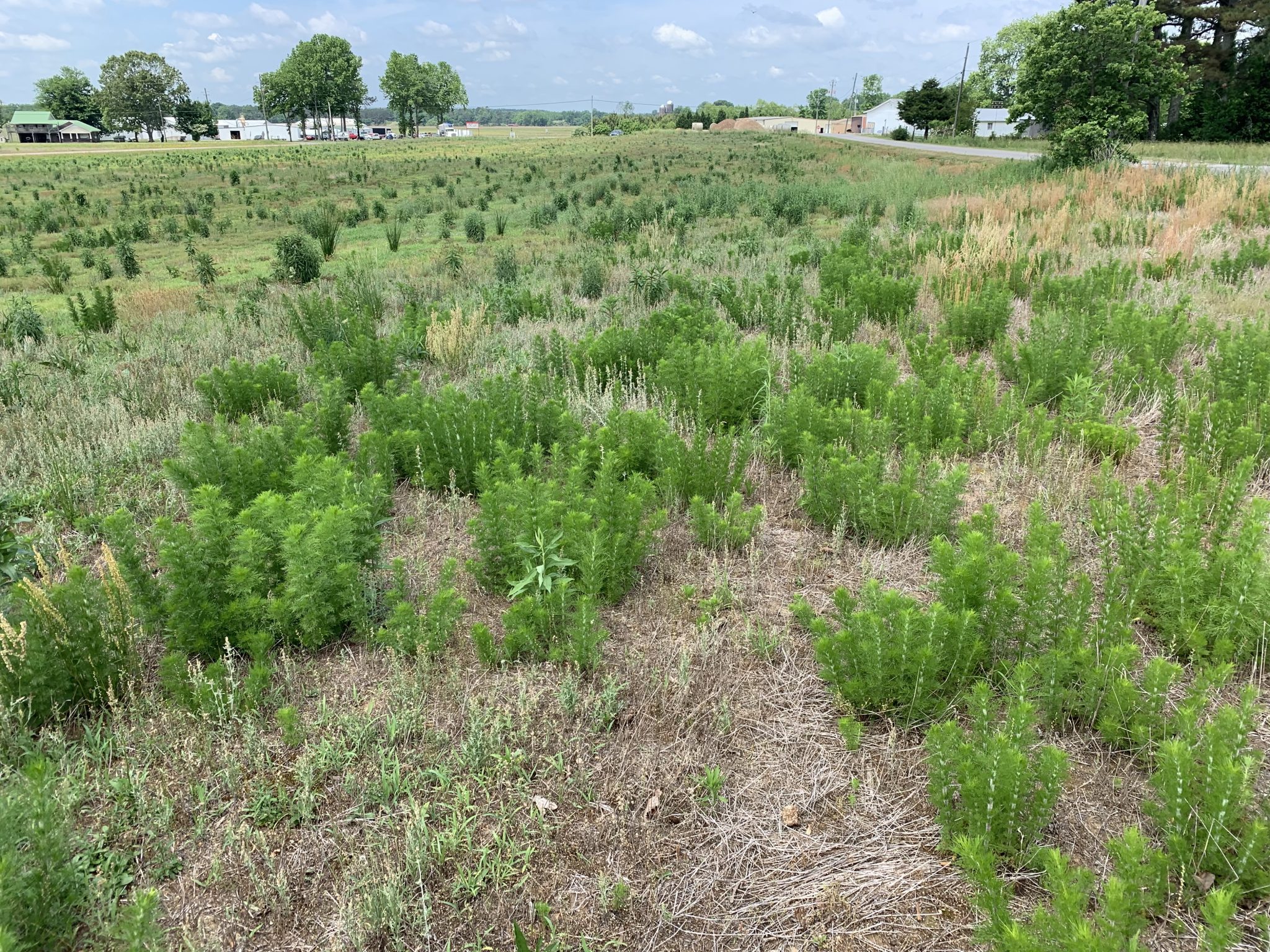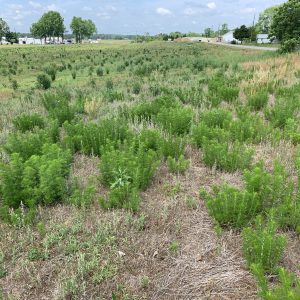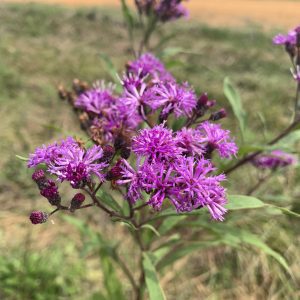Farming

As summer approaches, many weeds will become more evident in forage pastures and hayfields. At that time of year, the majority of cool-season species have matured, and their declining vegetation is giving way to new broadleaves and grasses of the warmer months. If a producer thinks that it is too late for weed control, they shouldn’t worry. They may be right on time.
Regarding weed management practices, many producers may have heard the sayings “start clean and stay clean” or “control weeds when they’re small and actively growing.” While these are accurate statements, they often refer to annual weeds in row crop agriculture or certain forage systems. Producers should think a bit differently about perennial weed species that are found in established forages. Perennial weeds reproduce by both seed and roots. The following information focuses mainly on perennial broadleaf weeds like dogfennel or cedarweed (figure 1), Carolina horsenettle, goldenrod (figure 2), and tall ironweed (figure 3). Each of these often survive the winter because of their thick underground roots or rhizomes and emerge each spring with ample energy from stored carbohydrates.
- Figure 1. Dogfennel or cedarweed (Eupatorium capillifolium).
- Figure 2. Canada goldenrod (Solidago canadensis).
- Figure 3. Tall ironweed (Vernonia angustifolia).
Control Methods
There are roughly three control methods effective in managing broadleaf perennials: hand removal, mechanical mowing (clipping) or disking, and herbicides. Hand removal is not a practical solution for most farmers, as many producer are not keen to remove a pasture full of dogfennel by hand. Mowing is a more reasonable option and creates a nice, clean field in a relatively short amount of time. One main downside of mowing is that it also removes a large amount of desirable forage biomass and does not effectively kill perennial broadleaf weeds. Furthermore, cattle usually avoid grazing these weed species leaving them to grow unchecked. Lastly, is herbicide usage. There are two important points to consider before applying herbicides: proper herbicide selection and proper application timing.
Herbicide Selection
One of the most commonly-used herbicides for broadleaf weed control in pastures is what many refer to as Grazon. Note, Grazon is not a single product, but there are two products that many producers may be referencing, which are GrazonNext HL and Grazon P+D. GrazonNext HL has the active ingredients aminopyralid and 2,4-D, while Grazon P+D includes picloram and 2,4-D.
Aminopyralid by itself is fairly weak in controlling dogfennel, which is why people may hear the recommendation of adding PastureGard (fluroxypyr + triclopyr) in a tank mix if dogfennel is your dominant weed. This addition also applies to DuraCor (aminopyralid + florpyrauxifen-benzyl). If dogfennel is the dominant weed, then Grazon P+D, Weedmaster or Brash (dicamba + 2,4-D), PastureGard, or Crossbow (triclopyr + 2,4-D) are much more effective single products. On the other hand, GrazonNext HL and DuraCor still provide excellent control of species like horsenettle and Brazilian vervain.
Timing of Application
A little knowledge of plant growth and physiology is helpful when attempting to control many of these perennial weeds with herbicide. Unlike the strategy for most small annual weeds, treating perennial weeds while they are small (less than 4 to 6 inches) is not often effective because they are emerging from the ground with the help of large, stored energy reserves in their roots. Researchers have found greater success when postemergence applications are delayed until weeds like dogfennel, goldenrod, and tall ironweed reach approximately 1 to 3 feet in height.
If you consider how tall these plants may get at maturity (approximately 5 to 7 feet), spray applications are targeting these plants when they are one-quarter to one-third of their mature height. At this point, each of these tall-statured species are in their vegetative stage of growth. Therefore, a timely herbicide treatment can potentially cover a greater amount of foliage, thus allowing a greater amount of herbicide to translocate to sensitive growing points for a more effective kill. Treated fields may be mowed 2 to 4 weeks after application or when plants have turned completely brown (necrotic).
Adequate spray coverage is important on these perennial weeds. This can be improved by increasing the spray volume of water to at least 20 gallons per acre to get product down through the foliage canopy. Additionally, many herbicide products have soil residual activity, so secondary targets like annual broadleaf weeds may be controlled prior to and even after emergence. Control will often decline if treatment is delayed until late summer because plants enter their reproductive stage and there is a risk losing adequate soil moisture, which is critical for plant growth and herbicide activity.
Keep in mind that picloram is a restricted-use pesticide, and an applicator’s license is needed for purchase and use. Read and follow all label recommendations carefully. Contact the Extension agent serving your county for help properly identifying plant species.
Trade and brand names used in this publication are given for information purposes only. No guarantee, endorsement, or discrimination among comparable products is intended or implied by the Alabama Cooperative Extension System.




